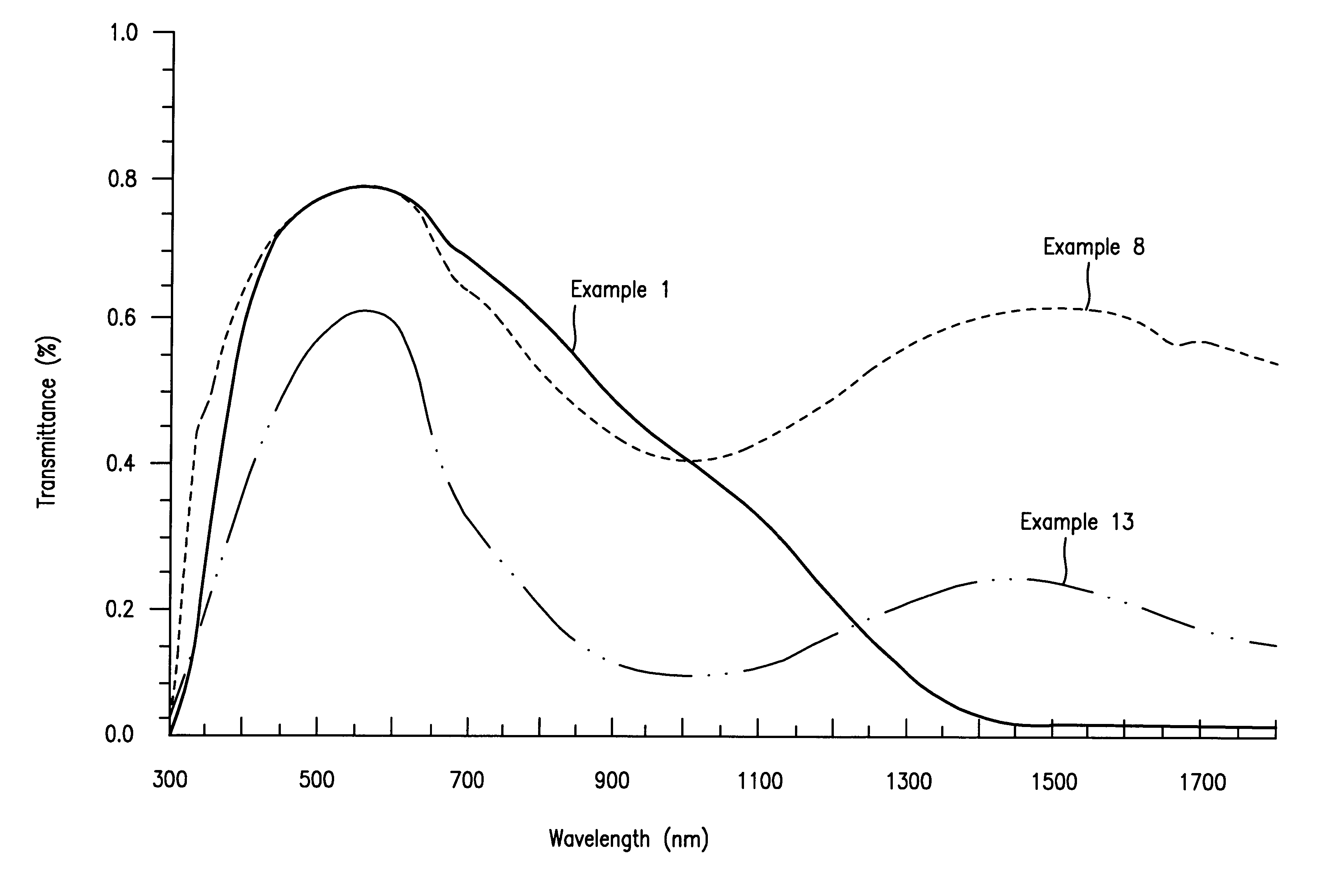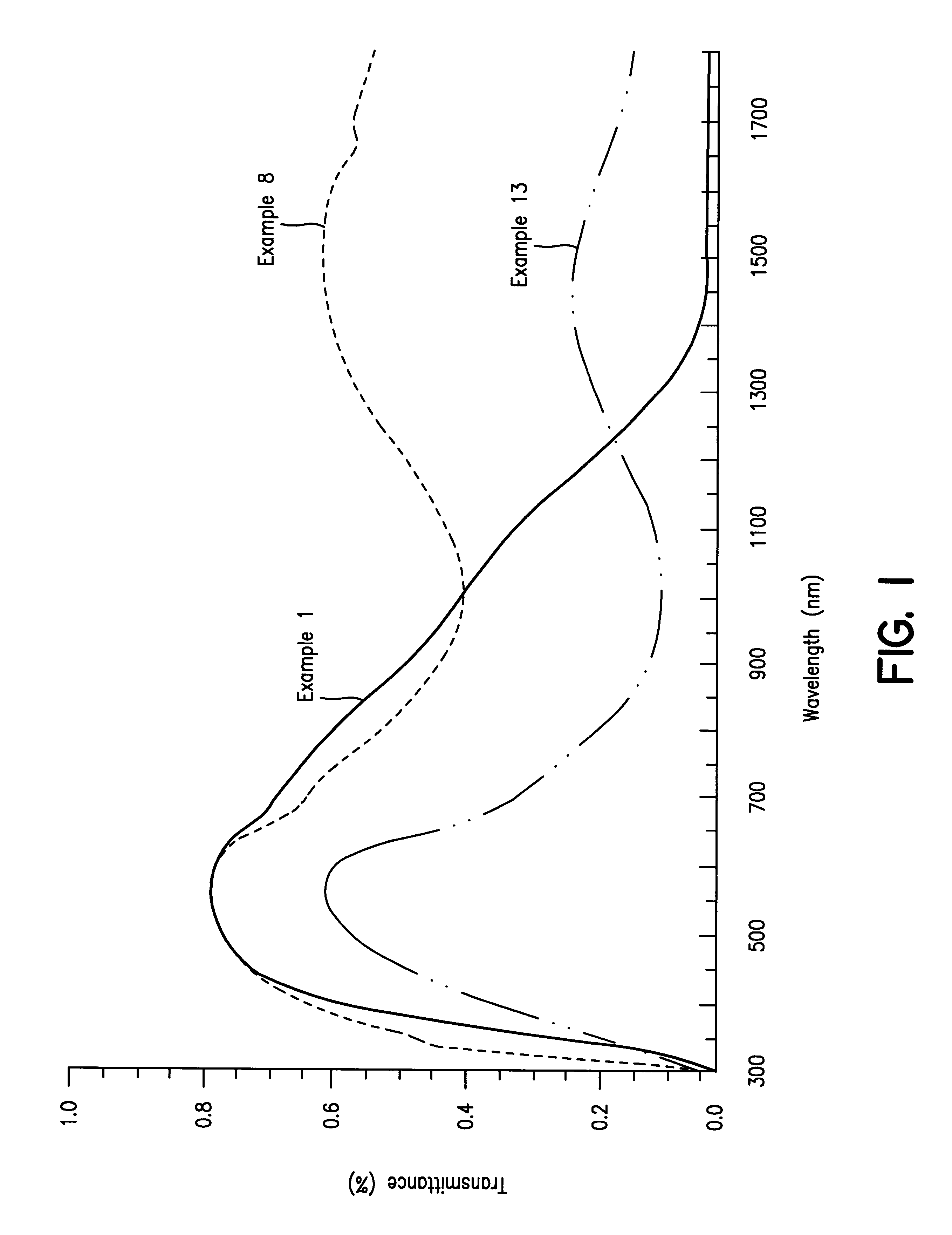Coating solution for forming a film for cutting off solar radiation and the film formed therefrom
a technology of solar radiation and coating solution, which is applied in the direction of radiation-absorbing paints, other chemical processes, synthetic resin layered products, etc., can solve the problems of high film cost, low weatherability of known organic agents, and the preparation of films that can effectively cut off heat radiation, etc., and achieves the effect of easy cutting off heat radiation and low cos
- Summary
- Abstract
- Description
- Claims
- Application Information
AI Technical Summary
Benefits of technology
Problems solved by technology
Method used
Image
Examples
examples 2 to 5
Dispersions A, B, and C were diluted with ethanol and mixed thoroughly in the proportions shown in Table 1 to prepare coating solutions. Example 1 was followed for preparing coating solutions, forming a film from each solution and examining it for various properties. The results are shown in Table 1.
example 6 to 9
Coating solutions were prepared by diluting Dispersions A, B and D with isobutyl alcohol and mixing them thoroughly in the proportions shown in Table 1. Comparative Example 1 was followed for forming a film from each solution and examining its properties. The results are shown in Table 1. The optical properties of the film according to Example 8 are also shown in FIG. 1.
FIG. 3 compares the compositions employed for the films according to Comparative Example 2 and Examples 6 to 9 and their optical properties. As is obvious from FIG. 3, the use of a small amount of LaB.sub.6 made it possible to form a film having a low solar transmittance, while retaining a high transmittance of visible light, as compared with the known ATO film, while achieving a great reduction in the amount of ATO. The difference is more obvious from a comparison of Example 8 and Comparative Example 2. The film of Example 8 containing about 10.5% by weight of LaB.sub.6 [0.37 / (0.37+3.16).times.100 (%)] showed an abo...
example 10
A cold-curing resin (a hybrid cold-curing resin / curing catalyst as supplied by JAR) was adopted as a binder (Dispersion E). A coating solution was prepared by diluting Dispersions A, D and E with DAA and mixing them thoroughly in the proportions shown in Table 1. A film was formed by repeating Example 1, and was left at room temperature for about one day to cure and form the intended film. Example 1 was followed for examining its properties. The results are shown in Table 1.
PUM
| Property | Measurement | Unit |
|---|---|---|
| Nanoscale particle size | aaaaa | aaaaa |
| Surface resistivity | aaaaa | aaaaa |
| Angle | aaaaa | aaaaa |
Abstract
Description
Claims
Application Information
 Login to View More
Login to View More - R&D
- Intellectual Property
- Life Sciences
- Materials
- Tech Scout
- Unparalleled Data Quality
- Higher Quality Content
- 60% Fewer Hallucinations
Browse by: Latest US Patents, China's latest patents, Technical Efficacy Thesaurus, Application Domain, Technology Topic, Popular Technical Reports.
© 2025 PatSnap. All rights reserved.Legal|Privacy policy|Modern Slavery Act Transparency Statement|Sitemap|About US| Contact US: help@patsnap.com



